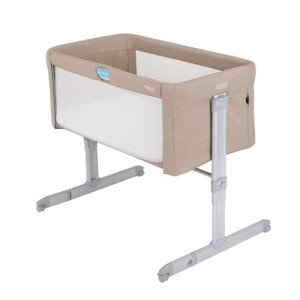15 Baby Cot To Bed Benefits That Everyone Should Be Able To
Transitioning from Baby Cot to Bed: A Comprehensive Guide for Parents
The journey from a baby cot to a bed marks a substantial milestone in a kid's development. It signifies self-reliance and a step toward growing up. Nevertheless, this shift can typically be intimidating for both parents and kids. Comprehending the process, the right timing, and how to make the shift smoother can substantially help in this journey. This short article explores the essentials to think about when transitioning your child from a cot to a bed, including common FAQs, ideas, and a structured plan to guarantee the process is as seamless as possible.
Why Transition from a Cot to a Bed?
Developmental Milestones
Transitioning to a bed is usually triggered by numerous aspects:
Physical Growth: As kids grow, they outgrow their cots. The typical size for a convertible cot is typically meant for infants up to 3 or 4 years old.
Cognitive Development: As toddlers become more curious and conscious of their surroundings, they might try to climb out of their cots, posing security dangers.
Potty Training: Once a child is potty trained, they might need much easier access to the bathroom, which a bed can help with.
Brother or sisters: The arrival of a new brother or sister can also demand this transition, as the cot may require to be released up.
When to Make the Transition
There is no one-size-fits-all answer to when a child need to shift from a cot to a bed. Nevertheless, here are some indications that it may be time:
- Climbing Out: If the kid is attempting to climb up out regularly.
- Age Consideration: Many experts suggest this shift around the age of 2 to 3 years, although every kid is special.
- Required for Independence: Children might reveal a desire for a big-kid bed.
Kinds Of Beds Suitable for Toddlers
Not all beds are created equivalent when it pertains to young children. Here's a breakdown of ideal bed types:
Bed Type
Description
Pros
Cons
Toddler Bed
Smaller sized, lower to the ground, often with side rails.
Size-appropriate for toddlers; stability.
Limited life-span as they outgrow quickly.
Single Bed
Requirement size bed meant for older kids.
Lasts longer; can be utilized for years.
Might be too huge for a young child; risk of falling.
Convertible Crib
Crib that transforms into a toddler bed.
Versatile; saves cash in the long run.
Can be costly; some may not offer full-sized alternatives.
Loft Bed
Raised bed with area below for play or storage.
Makes the most of area; fun for kids.
Not suitable for really children; security issues.
Actions to Transition Smoothly
Transitioning to a bed can be made much easier with careful planning. Here's a step-by-step guide:
1. Prepare the Space
- Select a Location: Decide where the bed will be positioned.
- Childproof the Room: Since young children are naturally curious, make sure that furniture is stable, sharp edges are covered, and hazardous items are out of reach.
- Keep Familiar Items: Retain preferred toys and bed linen to provide convenience in the new environment.
2. Present the Bed
- Involve Your Child: Let your child aid select their bed or bed linen to create excitement.
- Describe the Transition: Make them comprehend that they are ending up being a huge kid by having a big-kid bed. Usage encouraging language.
3. Make the Swap
- Bedtime Routine: Keep the bedtime regular consistent. This creates familiarity and comfort throughout the transition.
- Support: Offer them reassurance but avoid being excessively protective; it's crucial to motivate independence.
4. Address Fears and Concerns
- Speak about Fears: Children might have fears of falling or the dark; discuss these openly.
- Enhance Safety: Use guard rails on the bed initially and discuss what to anticipate throughout the night.
5. Screen and Adapt
- Be Patient: It may require time for your kid to change completely.
- Stay Consistent: Maintain the nighttime regimen, even when troubles develop.
FAQs Regarding Transitioning from Cot to Bed
Q1: How long does the shift from a cot to a bed typically take?
A1: The shift can differ significantly among kids— ranging from a couple of days to a couple of weeks— as they adapt to oversleeping a brand-new space.
Q2: Should I buy an unique young child bed?
A2: Investing in a young child bed can make the shift much easier given that they are designed with security in mind; however, if you prefer to go directly to a single bed, that can work too with the best precaution.
Q3: What if my child keeps getting out of bed?
A3: This is typical! Motivate them to remain in bed and develop positive reinforcement by rewarding them for remaining in bed through the night.
Q4: Is it okay to transition to a huge bed too early?
A4: Transitioning too early can cause sleep disruptions. It's necessary to assess the readiness of the child based on their signs and advancement.
Transitioning from a baby cot to a bed is a considerable step for both kids and moms and dads. With thoughtful preparation and understanding of the child's requirements, moms and dads can make the shift smoother and more enjoyable. By acknowledging when to make the transition, understanding the types of beds available, and preserving a constant regimen, moms and dads can reduce fears and promote a complacency for their little one throughout this exciting brand-new chapter. Eventually, Best Cot Bed is different, and perseverance is type in making this journey a favorable experience.
